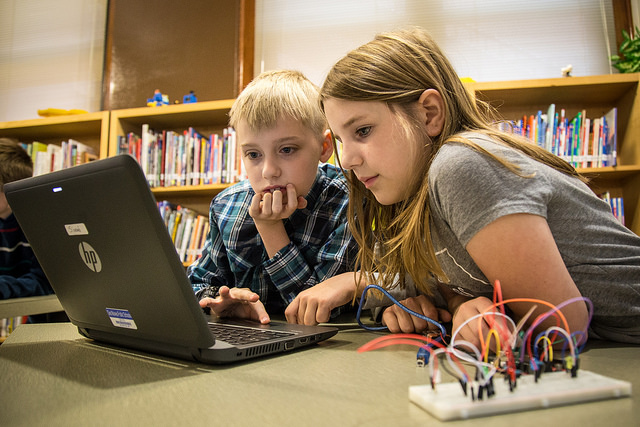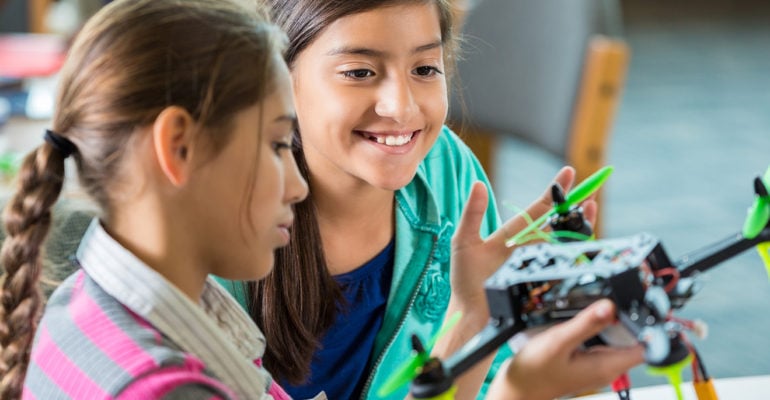The processes of inquiry, reasoning and collaboration required in STEM learning are similar to any experiential activity; learning activities must be hands-on experiences. STEM classes also demand rigor and relevance in a curriculum, and the students who take these classes must learn to think critically as they use science, technology, engineering, and mathematics to solve real world problems through direct learning experiences.

Going hands-on in STEM
Reading does not provide the kind of authentic experiences that students need. Students aren’t likely to be motivated by reading content alone, and as a result, their overall academic performance will likely suffer.
What’s lacking is relevance, and the way to make learning relevant is through explicit experiences that require students to engage tactilely and kinesthetically with lessons. They must do, produce, and accomplish. STEM education demands this type of engagement.
Imagine, for example, teaming up experiential learning objectives from science and mathematics classes, and putting what you are learning to real world use. That’s exactly what students from Texas did in Arlington, Washington. They entered the Aviation Design Challenge, putting their knowledge to hands-on use by designing and building an airplane.
Not everyone will build a plane in STEM classes. There are plenty of other STEM projects that engage students in hands on learning experiences. These verbs taken from STEM lesson plans hint at the possibilities:
-Science – Recycle, grow, transplant, graft, dissect, formulate
-Technology – Create, build, generate, plan, design
-Engineering – Construct, assemble, erect, fabricate, invent
-Mathematics – Solve, investigate, justify, prioritize, rate
STEM learning involves activities that require experience in analysis and synthesis; all learning is hands-on. The amazing thing about this list of STEM action verbs is that they are interchangeable among STEM disciplines. The hands-on experience in one subject can be applied to the others.
For example, students may find themselves recycling aviation parts, investigating the tensile strength of plant fibers, or designing mathematical codes.
Experience trumps everything else
Teachers have long known the value of using manipulatives in the classroom. They provide hands on, concrete learning. Students are more engaged, and they are more likely to remember what they have learned because of their experience. Students who engage in hands-on experiences achieve at rates as much as 20% higher than their peers who are not similarly engaged.
STEM, therefore, is a hands-on experience. It’s what good teaching has always been about.

Discover more about STEM with RobotLAB!
Check our products page, and our learning platform Engage!K12 that offer a wide range of lessons for students and teachers! No robotics experience required.



